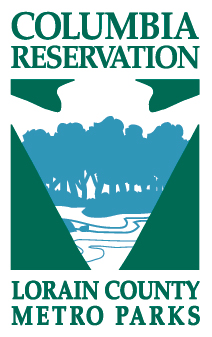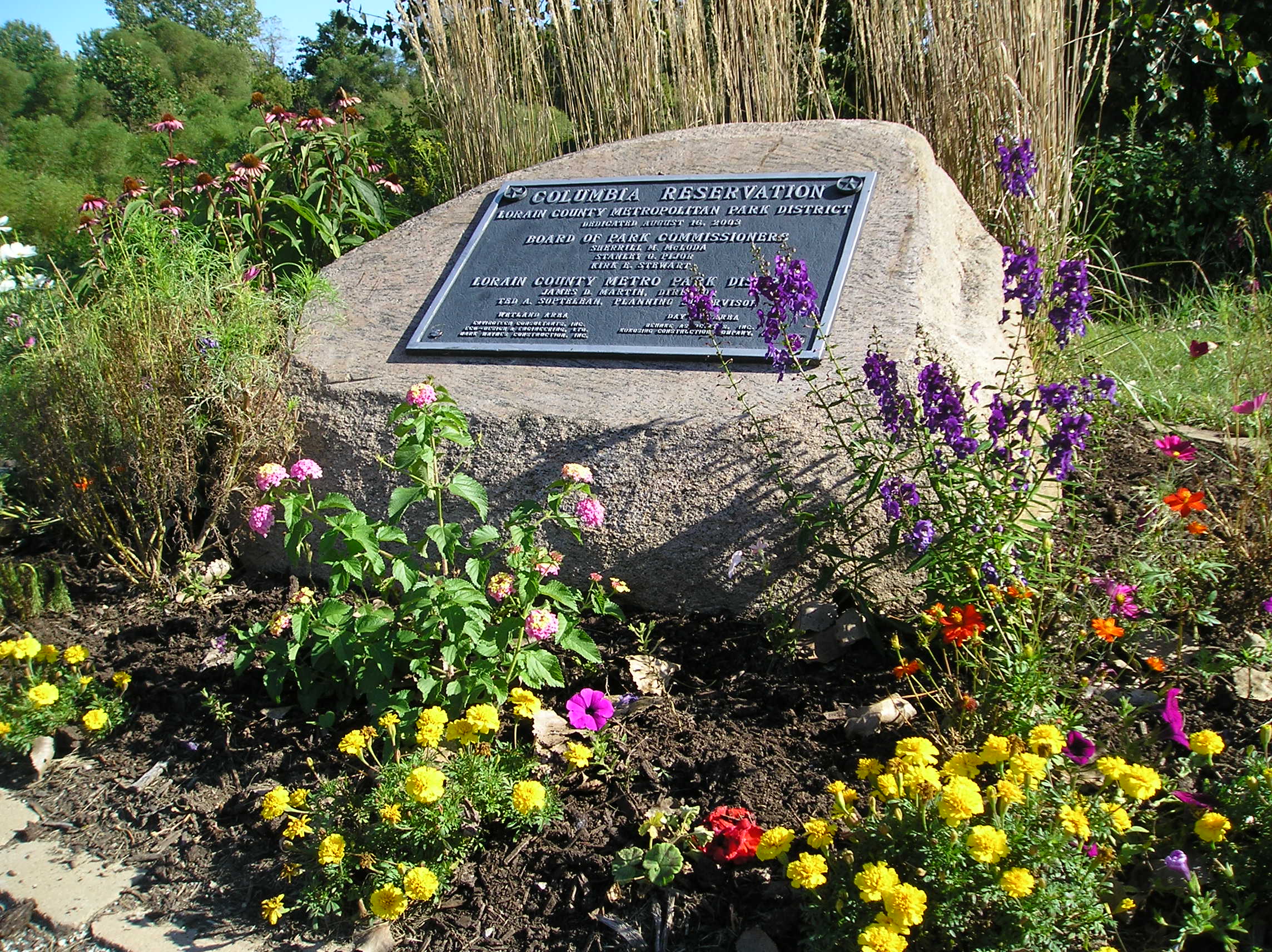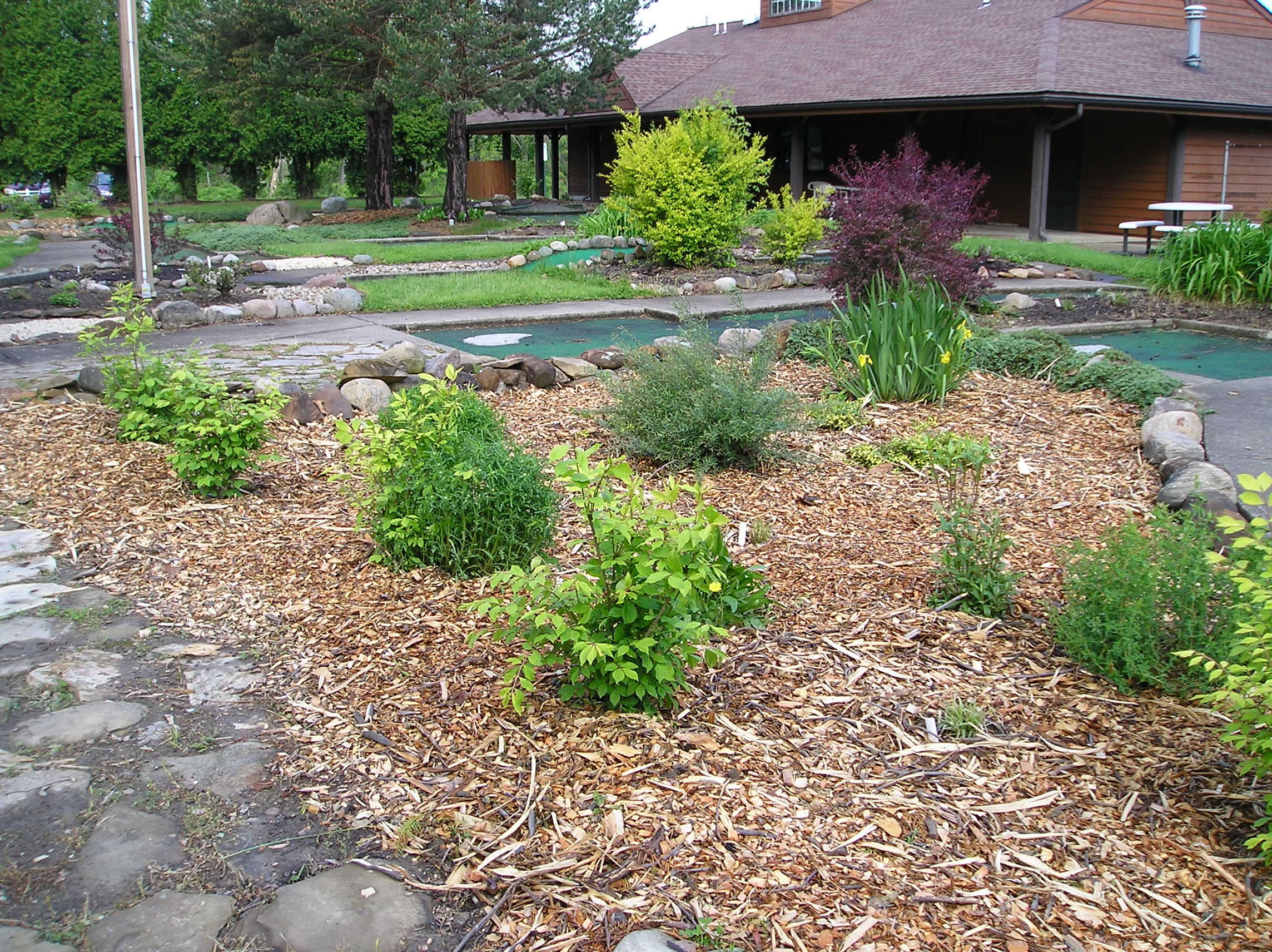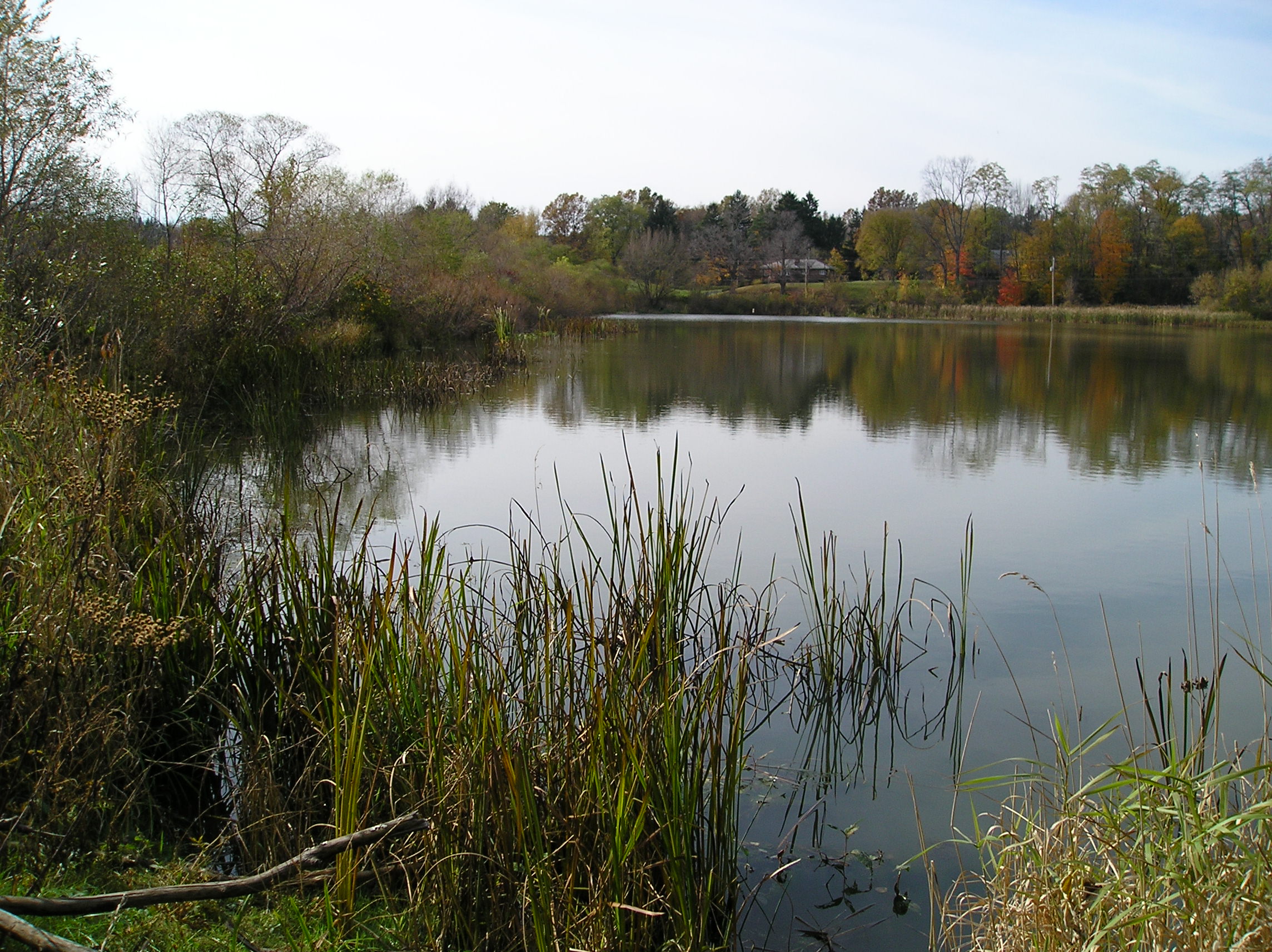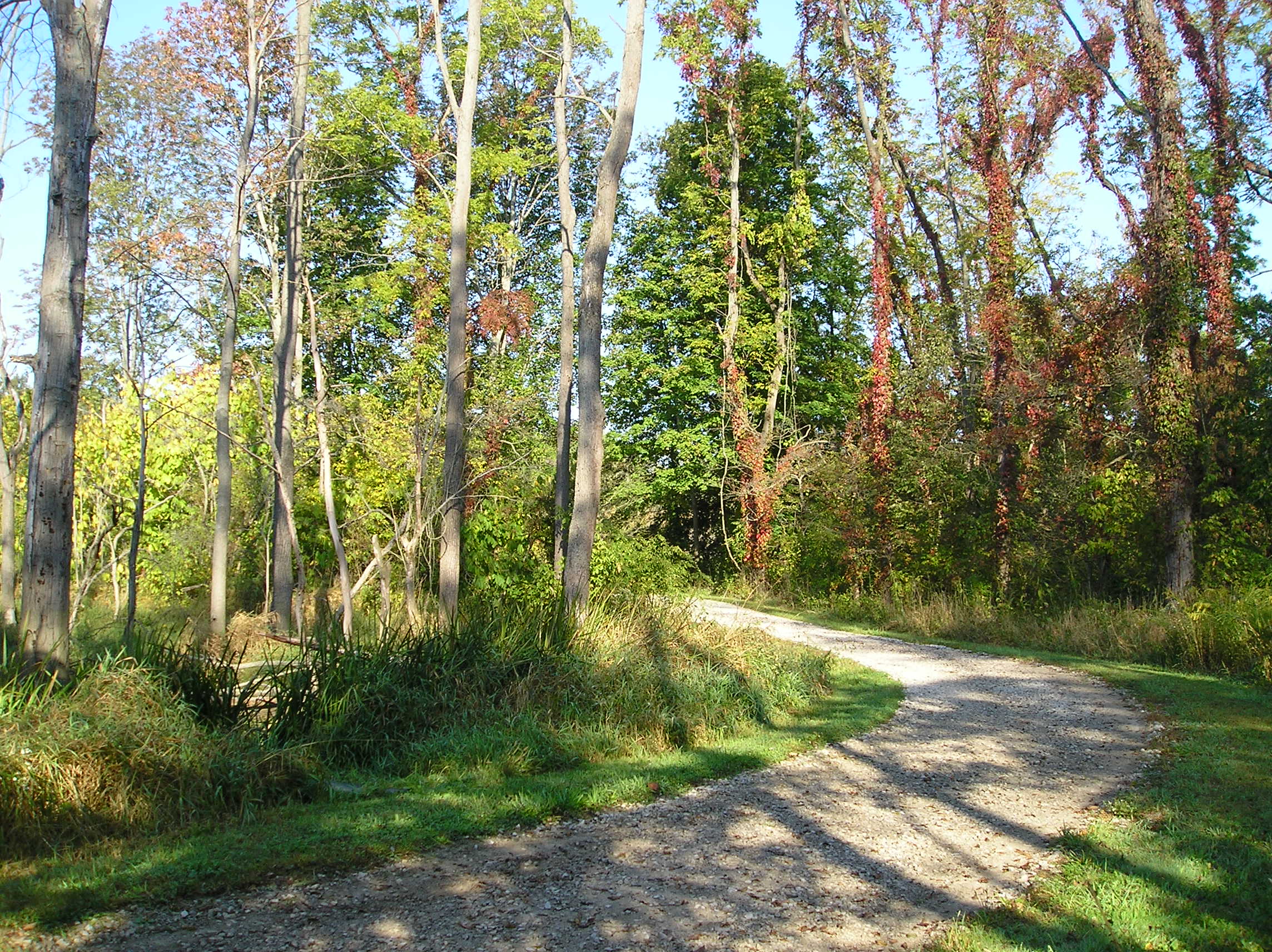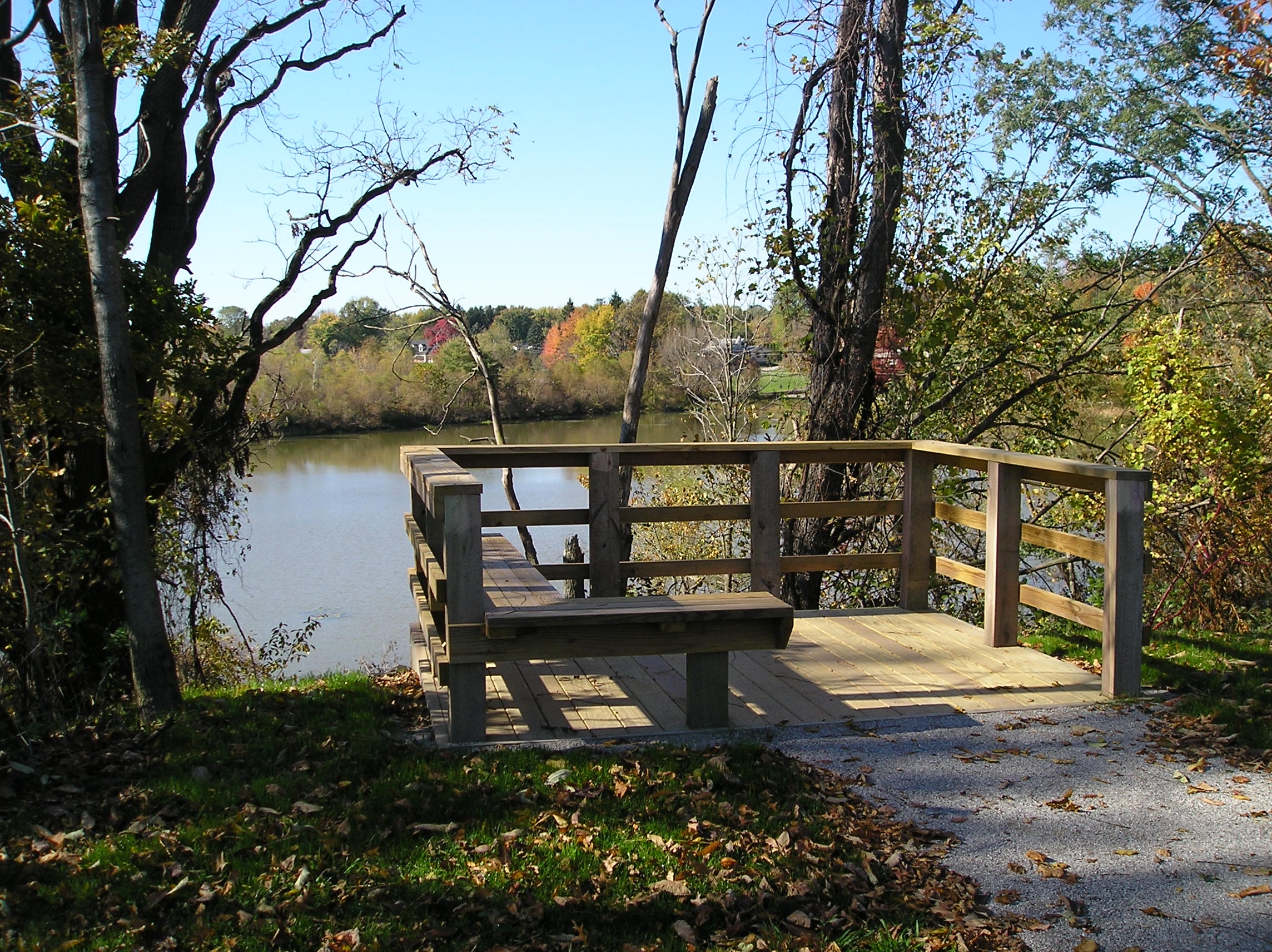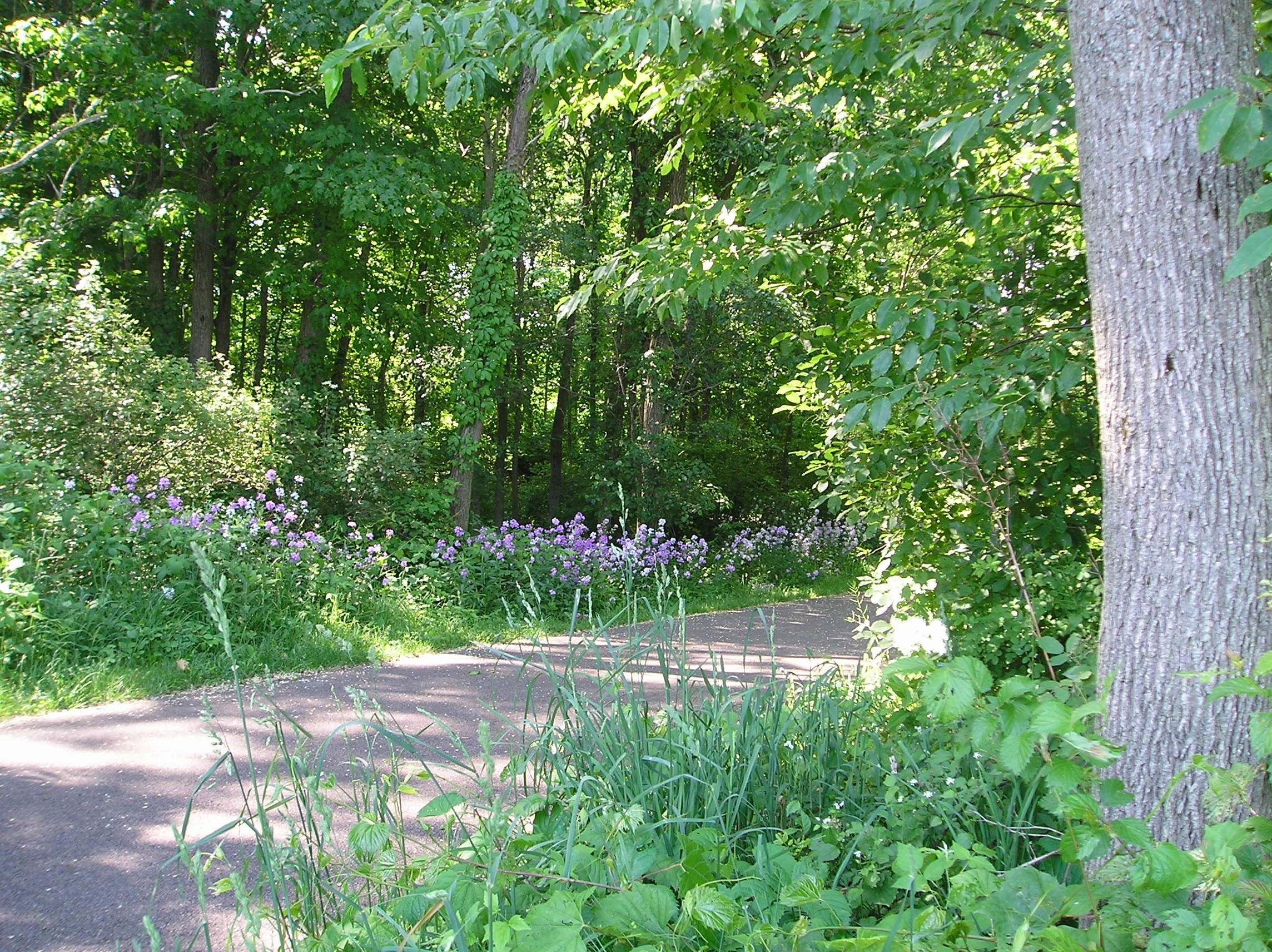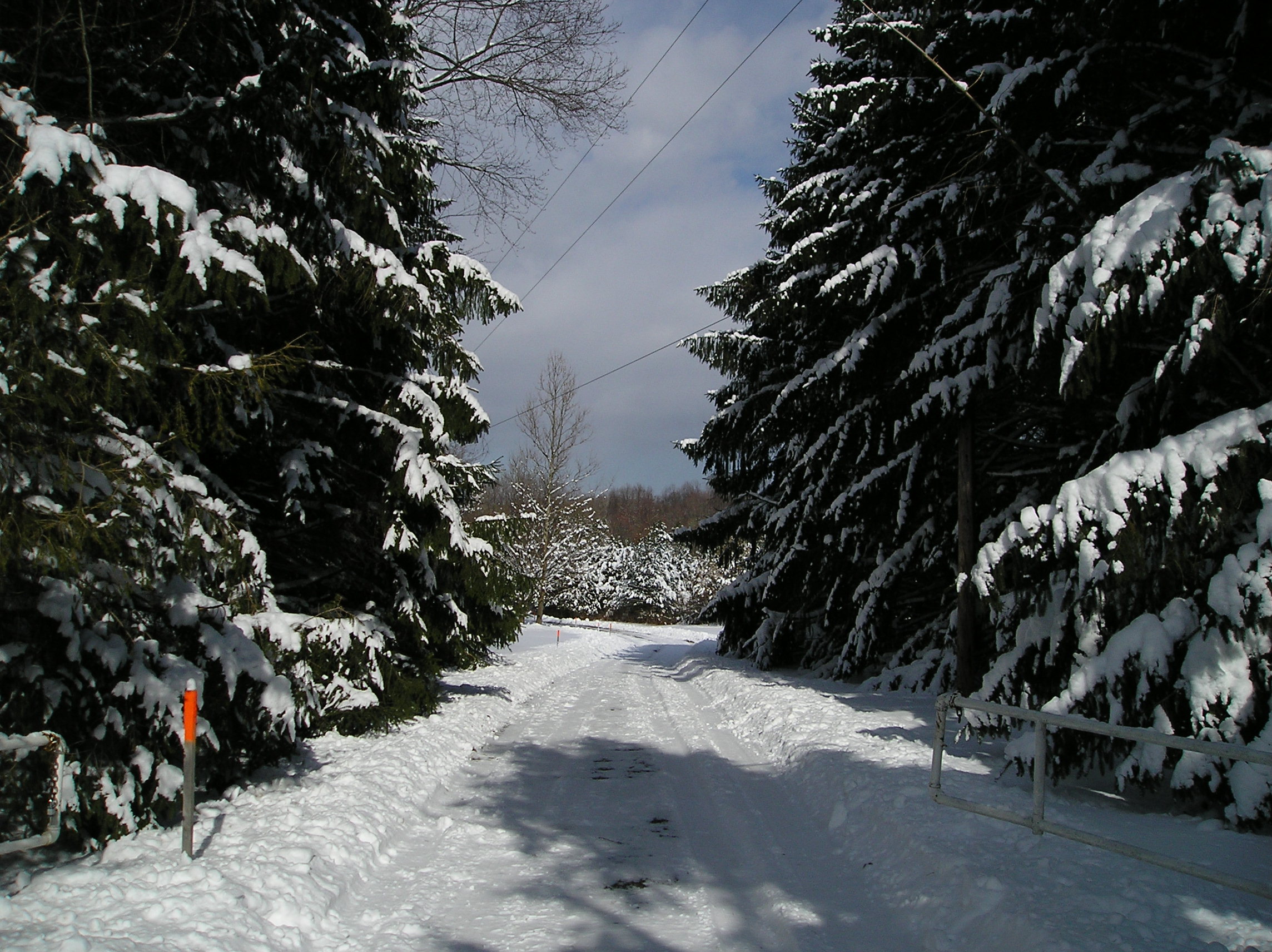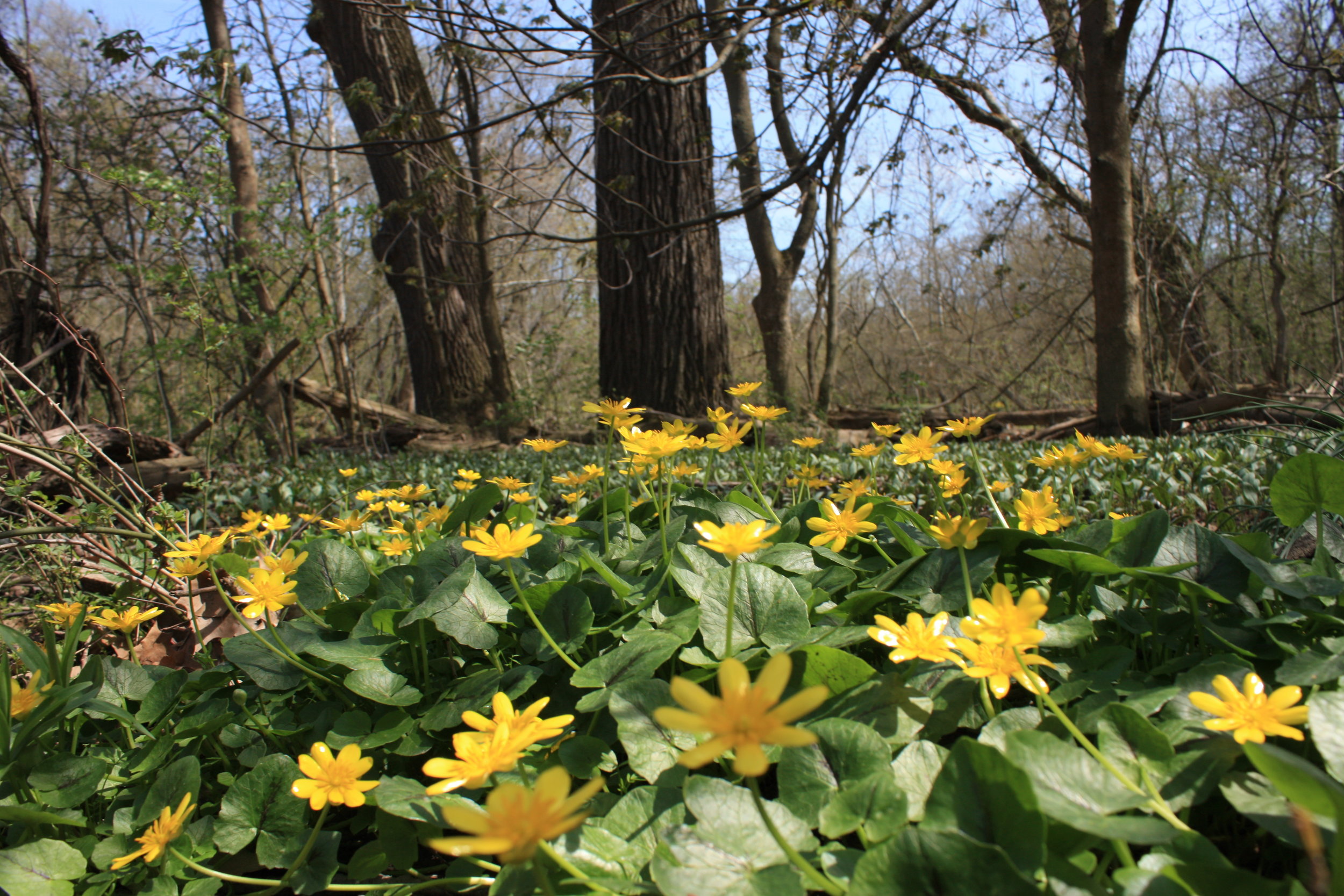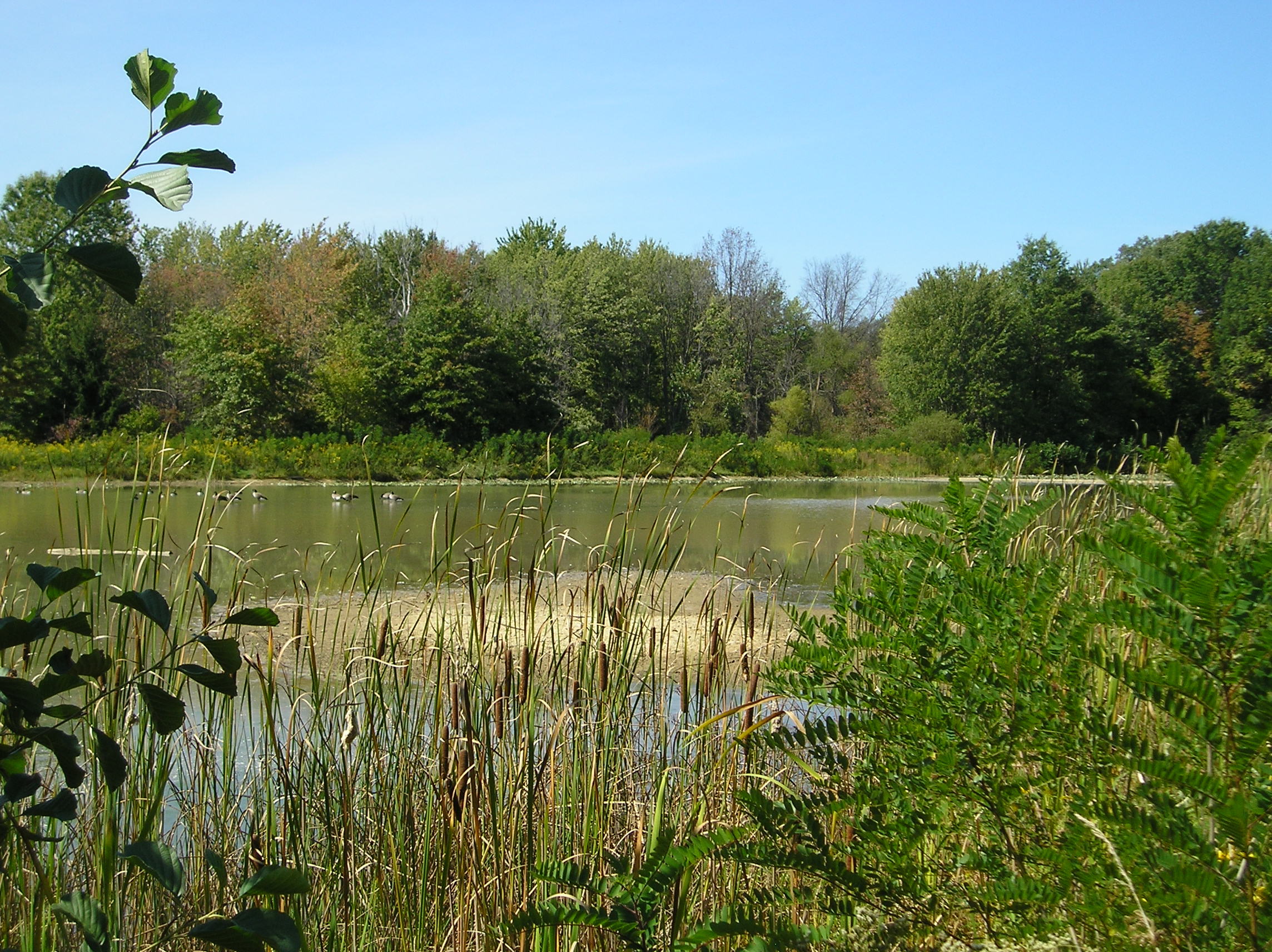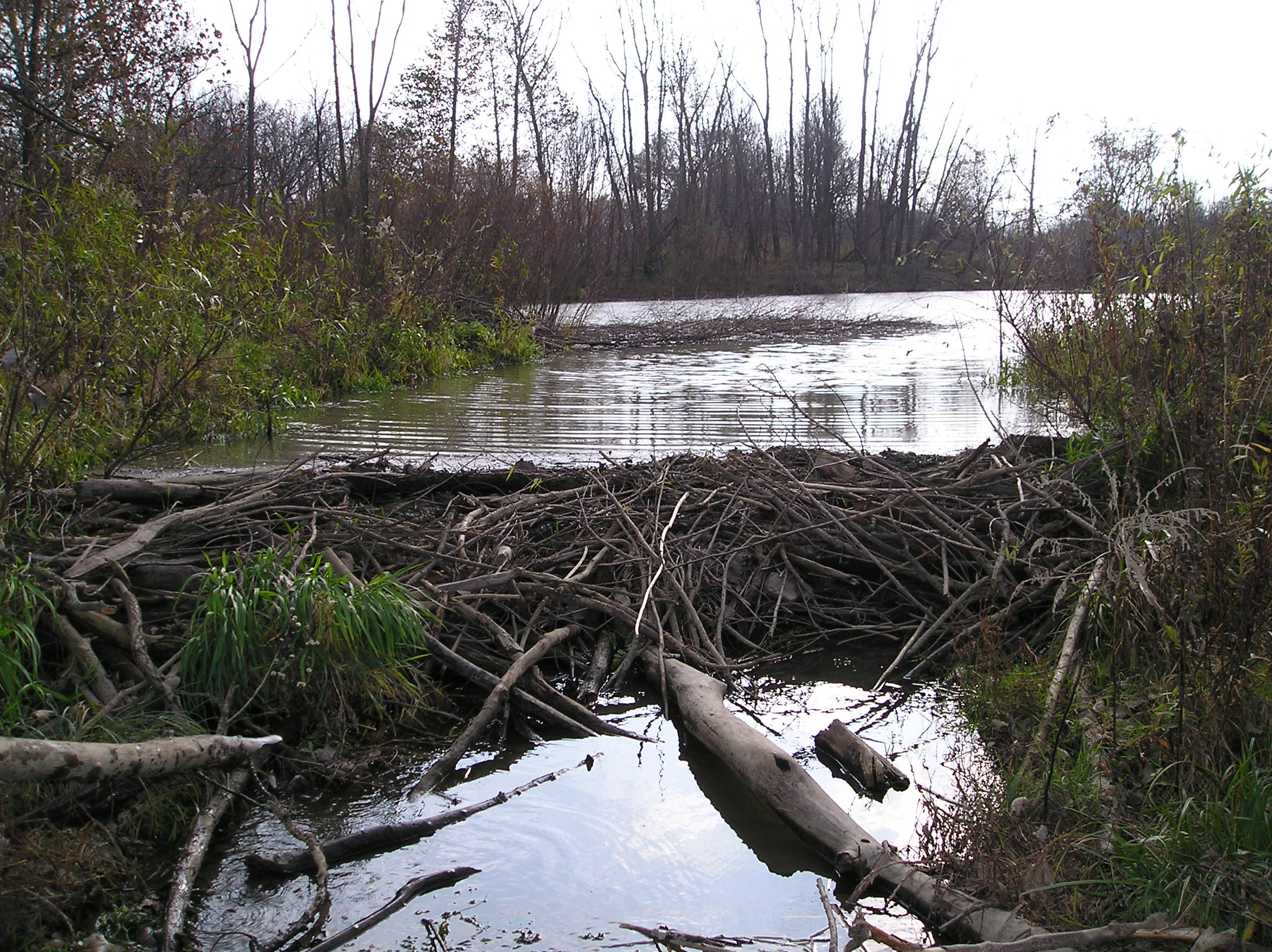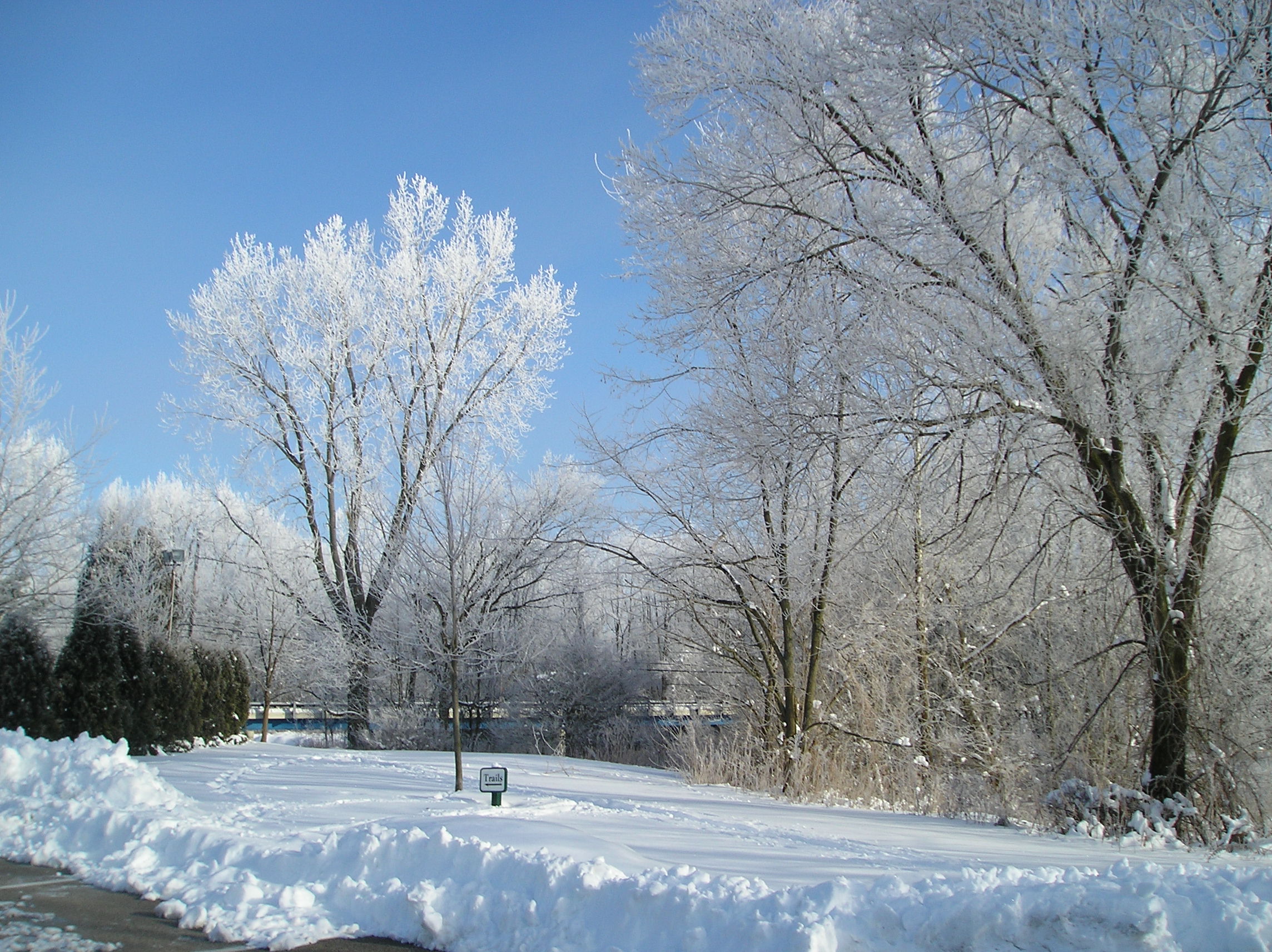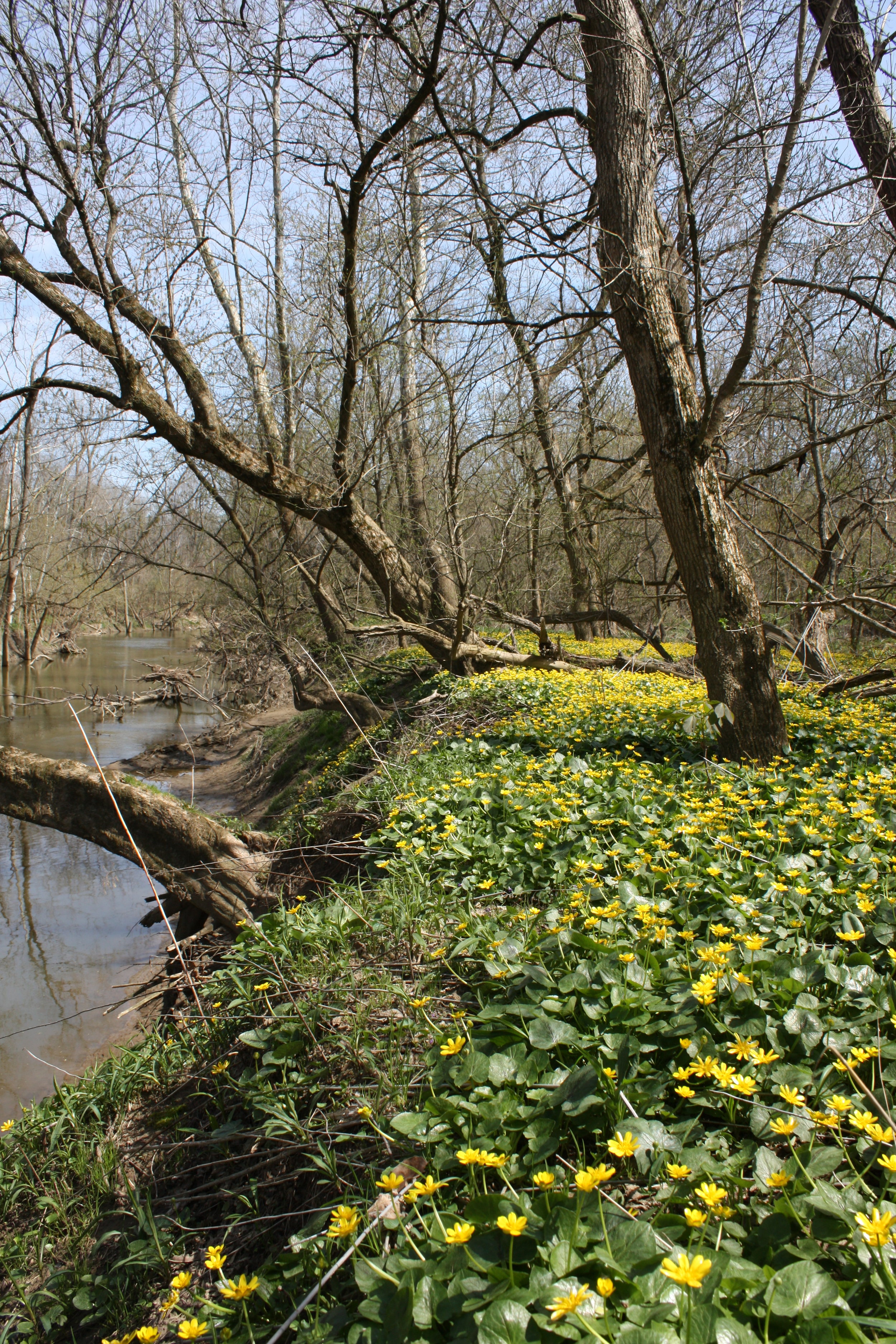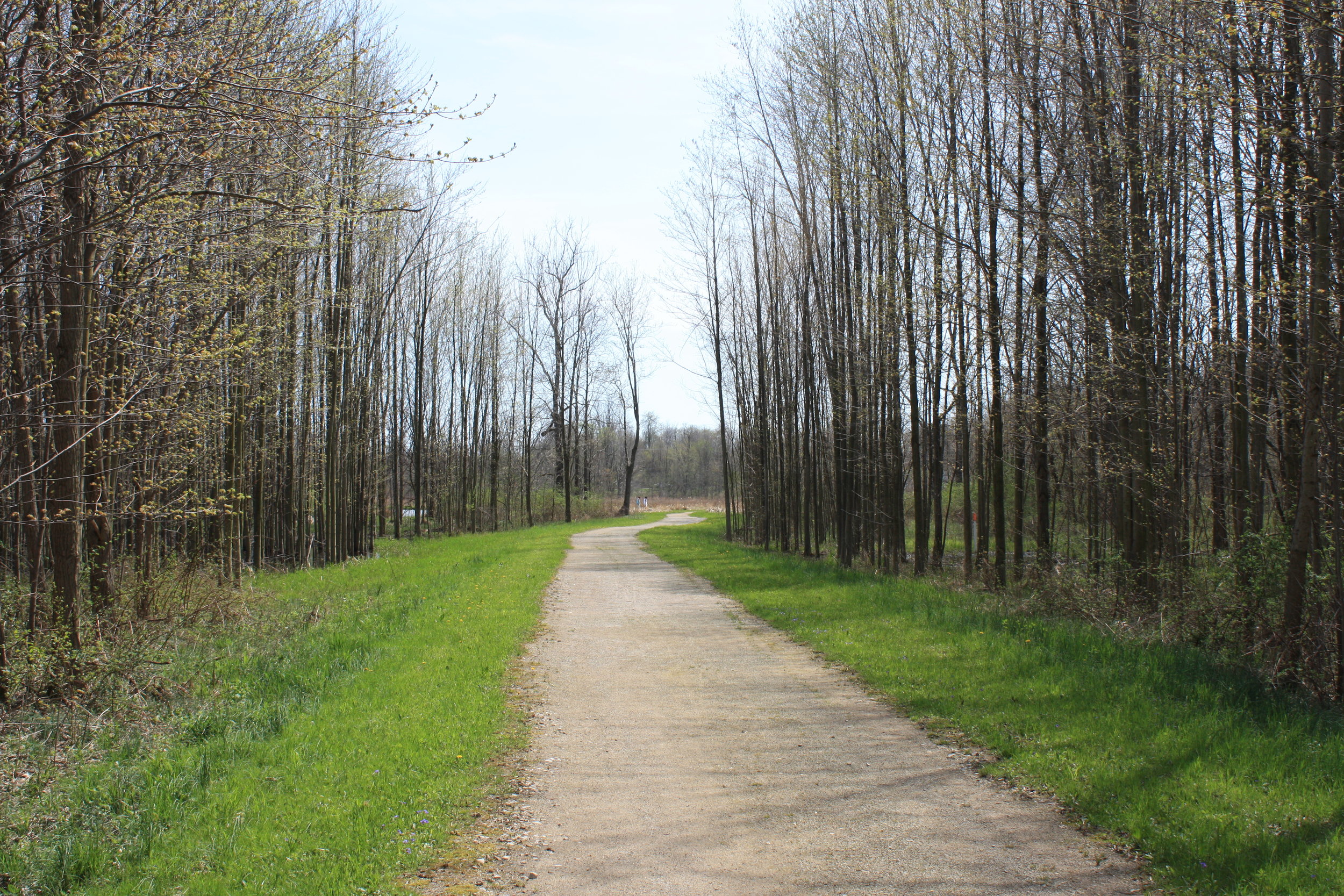Hours: 8 a.m.-Sunset (?), Daily
This 405-acre reservation was opened in August of 2003. As a wetland reservation, Columbia hosts a number of created ponds built around waterways near the west branch of the Rocky River. With miles of trails, a playground, miniature golf, concession stand, and a shelter, you can bring the whole family out for some fun!
HIGHLIGHTS
Trails, Ponds and Waterways
Like so many of the Lorain County Metro Parks, Columbia Reservation offers something for everyone, from man-made to natural. Primarily a wetland reservation, Columbia has 1 mile of paved trail, 2 ½ miles crushed limestone, and ¾-mile mowed unimproved trail. Although parts of the reservation are wooded, with more tree plantings in the works, the park in general is characterized by open, scenic views of waterways and wildlife. The trails provide many views of the park including ponds, marsh, meadows, and woods. There are also several overlooks to enjoy these beautiful views. The trails are a great place to walk, jog, roller-blade and walk the dog—though some parts are off limits to dogs out of respect for the wildlife from April-June.
Picnics & Programs for All
A day can easily be spent at Columbia Reservation. You can reserve a shelter for a picnic with 2 grills and a modern playground for the kids nearby. When you're ready to take a walk and enjoy the rest of the park, you'll find the trailhead sign with a large map to help you get your bearings. Year-round programs are available to explore the trails with a naturalist and are a great way to spend time at the park. Programs also take place at Briarwood Lodge, off of Briarwood Lane, year-round. You just can't get bored at Columbia!
Sundaes in the Park - Ice Cream and Mini-Golf
Open 7 days a week seasonally | 11:00 a.m. - 9:00 p.m.
(440) 865-8679 | SundaesatColumbia@gmail.com
Sundaes in the Park is a dino-themed mini-golf course and ice cream shop located in Columbia Reservation. We serve hard scoop ice cream, sundaes, floats, and other treats along with hot dogs and other delicious snacks. Behind the ice-cream shop is the 18-hole dinosaur-themed miniature golf course. Stop in, eat, play, and enjoy an ice cream treat while taking a stroll through the park. It’s a roaring good time!
Historic Columbia Blockhouse
After General Hull surrendered the fort at Detroit there was a report of soldiers and Native Americans landing on the shore of Lake Erie near Huron. The report caused a panic in the settlements of Columbia and surrounding settlements of Ridgeville, Eaton, Liverpool and Middleburg. They set off to the safety of a military installation to the southeast, taking what possessions with them that they could. They soon got word that the soldiers and Native Americans sighted landing at Huron were not enemy soldiers but soldiers paroled from the surrendered Fort Detroit. Upon returning to their homes they felt the need to erect a blockhouse fortification for a safe haven in the event of an attack by the British or their Native American allies. They built a blockhouse on the East side of the river directly across from the present blockhouse location. There was a company of Militia formed from the men of the surrounding settlements with Captain Hoadley of Columbia in command and David Beebe of Ridgeville was commissioned to lead the construction of the blockhouse.
Today, Columbia Reservation has a replica of the original Blockhouse and it sits along the walking trail only about 0.1 mile from the parking lot. The Columbia Historical Society presents two programs to the 3rd and 5th graders each year called “Columbia Days” about the first settlers and “Blockhouse Days” about our settlers at the beginning of the War of 1812. The Blockhouse is open for tours from the 2nd Sunday of May through September from 2-4 p.m. Special tours may also be arranged by calling 440-236-3254.
NATURAL HISTORY
A Wetland Restored
Columbia Reservation is the result of one of Northern Ohio's largest wetland mitigation projects—285 acres of which are restored wetland. Hydric soils already present due to the flood plain and close proximity of west branch of the Rocky River, helped accommodate the conversion back to wetland. The wetland was constructed with a system of ponds and trails that act as dikes, similar to those at Sandy Ridge Reservation, to help maintain the water levels necessary for a wetland environment. Extensive landscaping was done to build the system of dikes and ponds necessary to create a more consistent environment for wetland plants and animals. These ponds have been constructed in raised tiers, all of which flow back down to the river.
Wetlands are not necessarily just areas of standing water, but can contain areas that become saturated only at certain times of the year. Columbia Reservation has both of these areas and a range in between—it’s considered a Class 3 wetland, the most diverse kind.
A Growing Population
Plenty of wildlife already calls Columbia Reservation home. Typical species include muskrat, deer, skunk, rabbit, raccoon, fox, coyote, wild turkeys, snakes, frogs and turtles. Some unique mammal species include a healthy population of mink, beaver, least shrew, and the secretive star-nosed mole. A huge number of spiny soft-shelled turtles are often seen basking in the sun in early spring on the sandy shoreline. There's also a growing bird population including waterfowl, raptors and songbirds. Some notable species include bald eagle, egret, pileated woodpecker, red-shouldered hawk, heron, and barred owl. Predominant flora includes rushes and sedges—all of which are common to and indicate hydric or water-saturated soils. Other herbaceous species include ironweed (distinguished by a rich purple flower), wild hyacinth, tickseed, wing-stem, bur-reed, bottled gentian, cardinal flower, milkweed, Virginia bluebells, and purple vervain. Tree species that are typical of wetland areas include box elder, pin oak, dogwood, bur oak, black walnut, willow, sycamore, wild black cherry, sassafras, lots of buttonbush and even some sizeable stands of paw paw. Look for tree information plaques throughout the park to learn more about the tree species that are found in the park.
HISTORY
A Little History
While Columbia Reservation opened in 2001, it was actually part of the original Metro Parks master plan in the 1960’s. Using the wetland mitigation process to acquire land (as a result of Cleveland Hopkins airport expansion), construction finally began in 2000. The conversion began-from an unimpressive area of old river meanders and thick strips of bottomland hardwoods, fallow farm fields and a few large tracts of crop fields, to one of the largest and most diverse wetlands in Northeast Ohio.
Hitchcock Lake started in the 1920’s when Charley Hitchcock started damming up the bottom lands which created flooding as the area is spring fed by several springs. In the 1950’s Charley Hitchcock’s children hired a contractor to dig out the 7-acre lake. The lake was 10 feet at its deepest and would be use for canoeing, swimming, and fishing in the summer months. As time went on, the lake size remains the same but the depth is much shallower as natural succession and filling in occurs. In 1998, the Metro Parks purchased the Lake and surrounding area as part of the Columbia Reservation. The lake can be viewed from a beautiful observation deck off Heron Trail.
Hours
8 a.m.-Sunset, Daily
Contact
(440) 236-3254
*For shelter and room rentals, please contact the administrative offices at (440) 458-5121*

